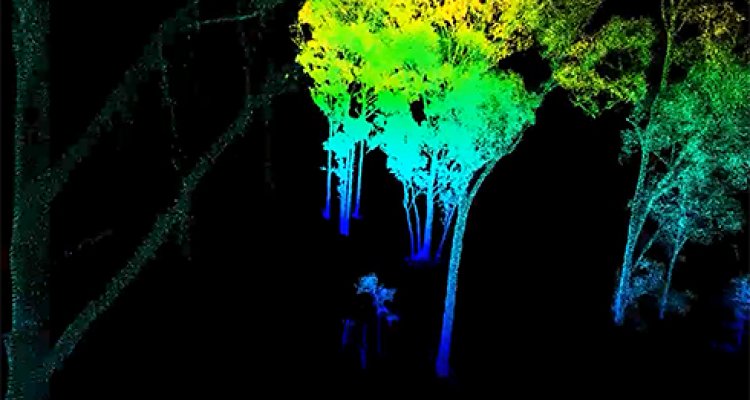
News
Reliable method of determining biomass and carbon stocks in forests
Terrestrial laser scanning is a technique that allows the structure of vegetation to be 3D-mapped to the millimetre. A first research project in Australia has shown that this technique can be used to more accurately determine the biomass of trees; far more so than the methods currently in use. This makes it an important development in the monitoring of carbon stocks for worldwide climate policy-making.
Both above-ground biomass and carbon stocks are important details for REDD, the United Nations climate programme that is striving to keep the destruction of forests in check and thereby preserve the uptake of carbon by trees. The current methods of mapping biomass are based on indirect relationships between the biomass and tree data such as height and diameter. “Terrestrial laser scanning, also called terrestrial LiDAR, allows us to measure biomass with far less uncertainty than before,”says Kim Calders of Wageningen University. “The current methods yield results that may be off by as much as 37 percent. The LiDAR method, by comparison, delivers more than 90 percent accuracy and there is still room for improvement. We can now ‘weigh’ trees far more precisely and then determine their biomass. The current uncertainties about the presence of carbon in forests are, therefore, reduced.”
Terrestrial laser scanning
Kim Calders worked together with a number of international colleagues and published the results of the study in the scientific journal Methods in Ecology and Evolution.“We have proved in Australia that the method works. Terrestrial laser scanning is an active remote sensing technique that can measure precise distances by sending out laser energy and then analysing the reflected energy. The instrument used in this work is a laser scanner that is positioned below canopy. Whereas the error increases for trees with larger diameters using the current methods, this is not the case with this new method. Furthermore, it is now also possible to determine the biomass of specific branches, something that could not be done before. As a result, how much biomass has been lost after a big storm can be precisely determined. In contrast, current methods of indirect measurements are based on the height and diameter of the tree, so no change is detected if the loss of a branch does not change these parameters.”
Testing in tropical forrests
The method will now be tested in forests that are far more important for the worldwide carbon stocks than Australian forests, e.g. tropical forests in Gabon, Peru, Indonesia and Guyana. According to Calders, “The problem here is that the laser system works from ground level, which will entail logistical problems. However, the primary question is whether the method works. If it does, then we will also be able to make better use of measurements made from airborne platforms, which will result in large forest areas being mapped. These data products are less detailed, but by calibrating the data from airplanes with more detailed data from ground level we will be able to make more reliable estimations. Far more reliable than our current estimations. And without having to cut down trees in order to validate our data.”